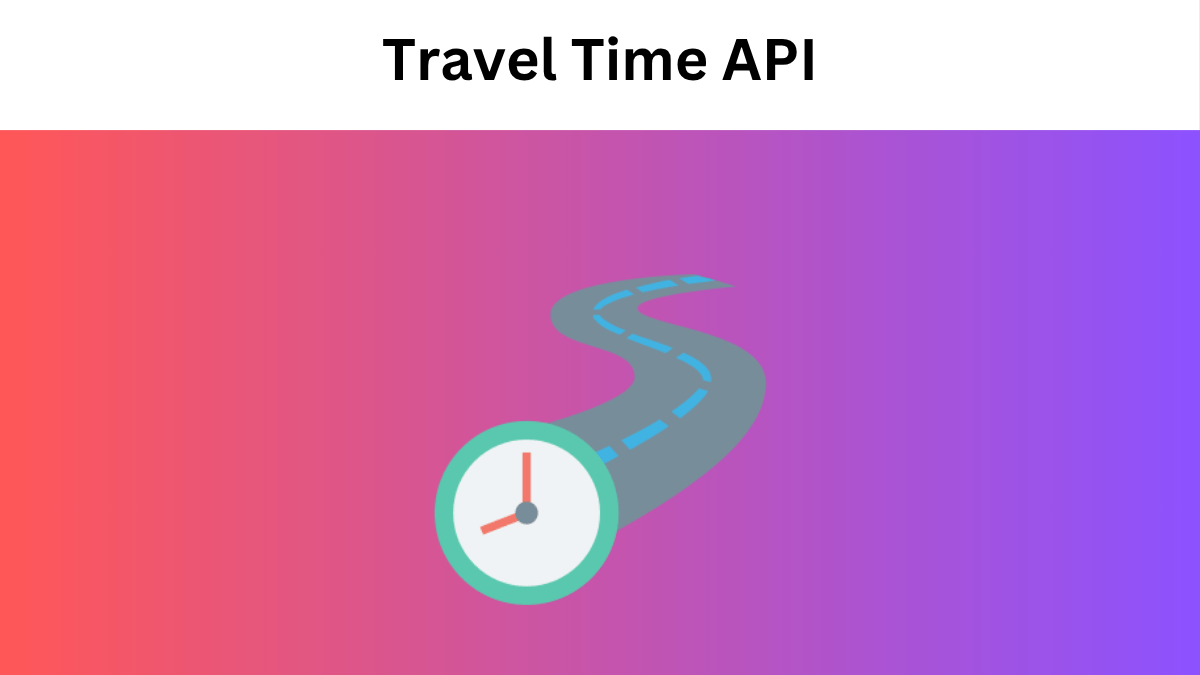Apps that rely on movement — from food delivery to ride-sharing to logistics — all need to calculate how long it takes to get from point A to point B. But estimating travel time isn’t as simple as drawing a straight line. That’s why so many developers turn to a travel time api — a tool that gives you accurate, real-world travel estimates based on routes, road conditions, traffic, and transportation modes.
Why Travel Time Is More Important Than Distance
Two locations might be 10 kilometers apart, but travel time could vary wildly depending on traffic, time of day, and road type. For a food delivery app, a 15-minute delay could mean a refund. For a commuter app, it could mean missing a train. That’s why distance alone isn’t enough — you need actual travel duration based on real-world data.
A travel time API solves this problem by calculating dynamic journey durations using up-to-date mapping data. Whether you’re working with driving, cycling, walking, or public transit, these APIs return the time required under current or average conditions.
How Travel Time APIs Work Behind the Scenes
When you request to a travel time API, you typically pass in a few key parameters:
- Origin and destination coordinates
- Mode of transportation (driving, walking, cycling, transit)
- Time of departure or arrival
- Optional parameters like traffic model, avoid highways/tolls, etc.
The API then evaluates these inputs against routing algorithms, traffic data, and road network metadata. It may even take historical trends into account (for example, if rush hour usually adds 20% to travel times on certain routes).
The response typically includes:
- Estimated travel time (in seconds or minutes)
- Distance
- Step-by-step route instructions (optional)
- Traffic-adjusted variants
- Geocoded locations and waypoints
Applications That Rely Heavily on Travel Time APIs
Delivery Platforms and Last-Mile Logistics
Companies like food delivery services, courier networks, and e-commerce platforms rely on accurate ETAs to dispatch drivers, optimize routes, and update customers in real time. The more precise the travel time estimate, the more efficient the delivery network becomes.
Commuting and Mobility Apps
Public transportation apps, carpool platforms, and navigation tools use travel time APIs to help users find the fastest or most convenient route at a given time. Without real-time travel data, these apps become outdated and unreliable.
Urban Planning and Smart Cities
Municipalities and transportation planners use travel time calculations to identify traffic patterns, infrastructure needs, and underserved areas. This data can help optimize public transit routes, reduce congestion, and plan future roadwork or policy changes.
Healthcare and Emergency Services
Travel time is crucial for ambulances, fire services, and patient transport. Emergency dispatch systems can integrate a travel time API to make split-second decisions on which vehicle should respond to a given incident — not based on who’s closest, but on who can arrive fastest.
Customizing the API to Fit Your Product
Not all travel time APIs offer the same flexibility. Depending on the platform, you can often configure:
- Departure vs. arrival time logic (e.g. “How long will it take to arrive by 5:30 PM?”)
- Live traffic vs. historical averages
- Batch requests (many origins to many destinations)
- Waypoints for multi-stop trips
- Speed assumptions for different vehicle types
Developers can tailor their API requests to match the specific use case — whether it’s predicting delivery windows or managing daily commuter flows.
Technical Considerations for Integration
To use a travel time API effectively, you’ll want to plan for:
- Rate limits: How many requests you can send per minute or day
- Latency: How quickly responses are returned (important for live apps)
- Caching: Storing frequent routes to reduce redundant queries
- Geocoding integration: Converting user-entered addresses into coordinates
- Error handling: Managing timeouts, missing data, or invalid routes
You’ll also need to choose whether the requests come from the client side or your server. For security and efficiency, most developers handle API calls on the backend and expose only the results to the front-end interface.
Sample Use Case: Food Delivery Dispatch System
Let’s say you’re building a dispatch algorithm for a food delivery service. Here’s how the travel time API fits into your logic:
- Customer places an order.
- API geocodes the restaurant and customer address.
- You query the travel time API to calculate driving time from available drivers to the restaurant, and from the restaurant to the customer.
- You assign the closest driver by time, not distance.
- The ETA is displayed to the user and used to update them during transit.
This creates a more transparent, efficient, and satisfying user experience.
Travel Time vs. Route Optimization
It’s worth noting: travel time APIs are not the same as route optimization APIs. A travel time API tells you how long a specific route will take. Route optimization APIs, on the other hand, analyze multiple destinations and determine the most efficient order to visit them (e.g. solving the traveling salesman problem). However, both can work together.
If you’re managing deliveries, you might first use route optimization to find the best sequence of stops, then use a travel time API to get estimated times between them.
Choosing a Provider: What Matters
When evaluating a travel time API provider, consider:
- Accuracy of travel estimates (real-time traffic data is a huge plus)
- Support for multiple transport modes
- International coverage
- Clear and simple pricing model
- Developer documentation and SDK availability
- Batch query performance and support
If you expect high usage, also look for bulk processing support, premium SLAs, or white-label options.
What Makes a Travel Time API Developer-Friendly?
Aside from raw performance, look for these quality-of-life features:
- Interactive API explorer or sandbox
- Clear examples in multiple programming languages
- Logging tools to monitor failed requests
- Built-in response caching
- Transparent versioning and changelogs
These features help reduce integration time and make it easier to maintain your product over time — especially as your user base scales.


Comments are closed